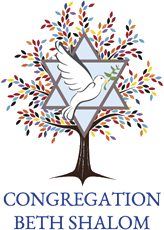For many Reform Jews, Passover is the High Holy Days of the spring. Like Rosh Hashanah and Yom Kippur, the family gathers together more than any other holiday, and while the High Holy Days focus on spiritual renewal, Passover focuses on the first of the most important historical events in our long and glorious history. These are the two highlights of the Jewish calendar.
However, as Rabbi Evan Moffic points out, Passover is just the starting point, the beginning of the period that culminates with the giving of the Torah. This period, so often ignored, is the Counting of the Omer.
Omer is the Hebrew word for grain, suggesting that this practice originated in agricultural times. Today, however, it marks the transition from the Exodus from Egypt (Passover) to the Giving of the Law (Shavuot).
To understand the importance of the Omer period, we need to understand the writings of the Oxford philosopher, Isaiah Berlin. One of Berlin’s greatest contributions to philosophy was to define the distinction between negative freedoms and positive freedoms.
Negative freedoms are “freedom from”, which would include freedom from slavery, from coercion, from unjust imprisonment. These freedoms are necessary but not sufficient.
Real human flourishing requires positive freedoms, freedoms such as “life, liberty and the pursuit of happiness”. Positive freedoms rest on choice. They emerge out of our ability to make decisions, to pursue opportunities, to use our unique gifts.
From a spiritual perspective, negative freedoms provide us a context for a life of faith and purpose. Positive freedoms are the way we realize that life.
Passover symbolizes the attainment of negative freedoms. In Egypt the Israelites had no freedom from oppression or coercion. When God took them out of Egypt, Israel attained those negative freedoms. Yet, without a set of laws and a sense of responsibility, freedom can quickly descend into chaos.
The Giving of the Law at Sinai symbolizes Israel’s embrace of positive freedom. For Judaism Torah provides our path to “life, liberty and the pursuit of happiness”.
Counting the Omer is the bridge between the two – making the journey from achieving freedom to flourishing. Crossing the Red Sea was the beginning, but just the beginning. The most important part of the story was yet to come.
B’Shalom and Chag Sameach
Rabbi Stanley Halpern
